
Top AI Tools for Crafting 3D Characters Easily
The world of 3D character creation has changed a lot with AI tools. Artists and designers can now use new software that makes modeling faster and more creative. Platforms like Meshy, ZBrush, Blender, and Substance Painter have raised the bar.
These tools make it easier for everyone to create complex designs. You don't need to be a tech expert. With the rise of gaming, animation, and virtual reality, these AI tools are key for creators.
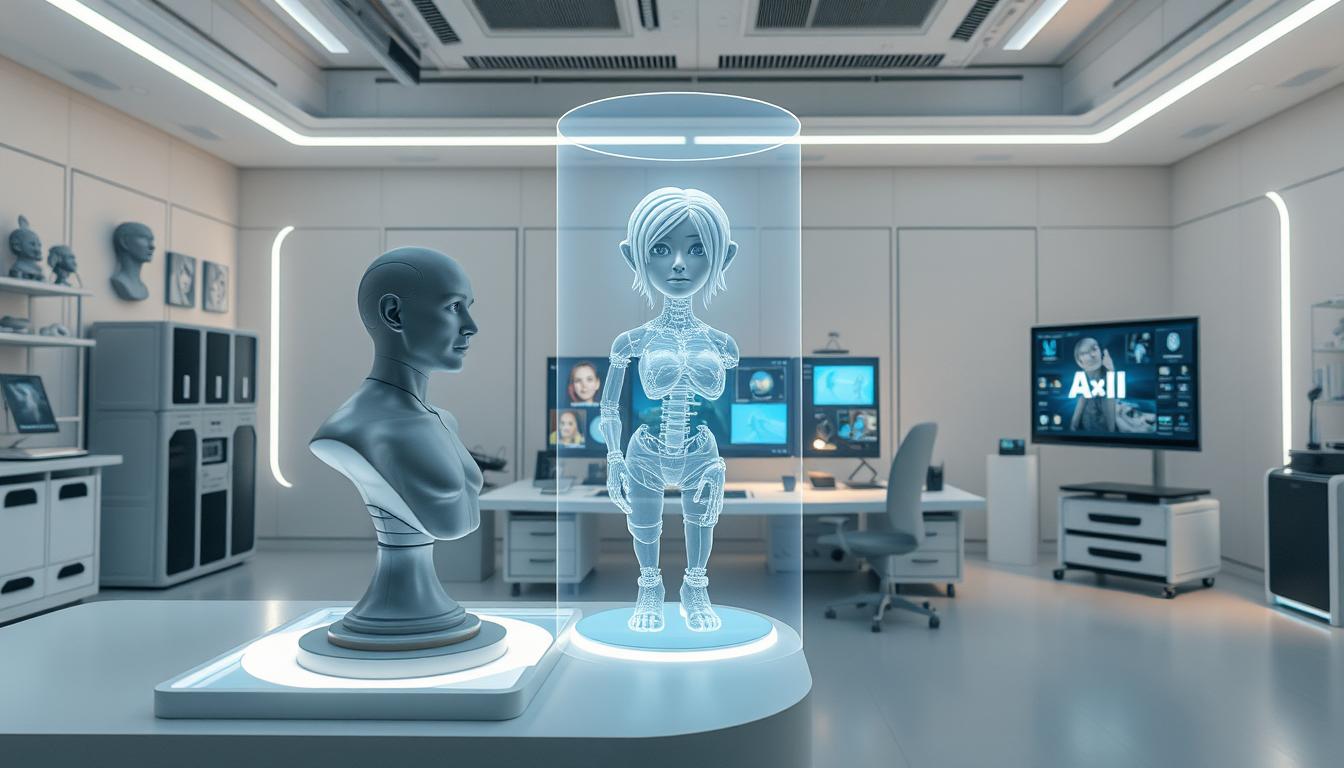
AI helps artists be more creative by solving technical problems. This lets them focus on new ideas without getting stuck on tech issues.
Key Takeaways
- AI tools for 3D character design streamline the modeling process.
- Platforms like Meshy, ZBrush, and Substance Painter enhance creative possibilities.
- Access to innovative 3D character creation software supports both professionals and beginners.
- The demand for high-quality characters continues to grow in various industries.
- Adopting AI solutions provides a competitive advantage in character design.
Introduction to AI in 3D Character Design
The introduction to AI in 3D art is a big change for creators. It's not just a trend; it's changing many fields, like entertainment and healthcare. With AI in character design, making high-quality assets is faster and easier, taking projects to new levels.
Generative AI has made 3D character modeling easier. Tools like Alpha3D let beginners turn 2D images into detailed 3D models easily. It's starting with the shoe industry but could expand to other areas too.
The Bubbles app makes turning 2D plans into 3D spaces simple. It speeds up the design process, letting creators see and change their work quickly.
AI tools like Convai create smart avatars for games, making them more engaging. Move.ai turns devices like iPhones into tools for motion capture, making 3D creation more accessible.
CLick to Watch Video Tutorials.
AI is changing how designers work. Tools like NVIDIA Omniverse and Autodesk Maya improve workflows, ensuring designs are consistent. AI helps make designs faster and cheaper, letting designers focus on their creativity.
Learning about introduction to AI in 3D art is key to using new tools in character design. Using these technologies lets creators explore new artistic heights.
The Role of AI in Modern 3D Character Creation
AI has changed 3D design, making it faster and better. Modern tools use AI to help designers create detailed characters and scenes. This means artists can spend more time on their ideas.
AI also makes hard tasks easier. It helps with things like lip-syncing and organizing assets. This saves time, letting artists be more creative.
AI makes 3D modeling simpler. Many people find old methods too hard. But AI helps make these tasks easier. This lets more people create 3D content.
AI is useful in many areas, like gaming and architecture. In gaming, AI helps make models ready for games. This is important as more people play games with 3D models.
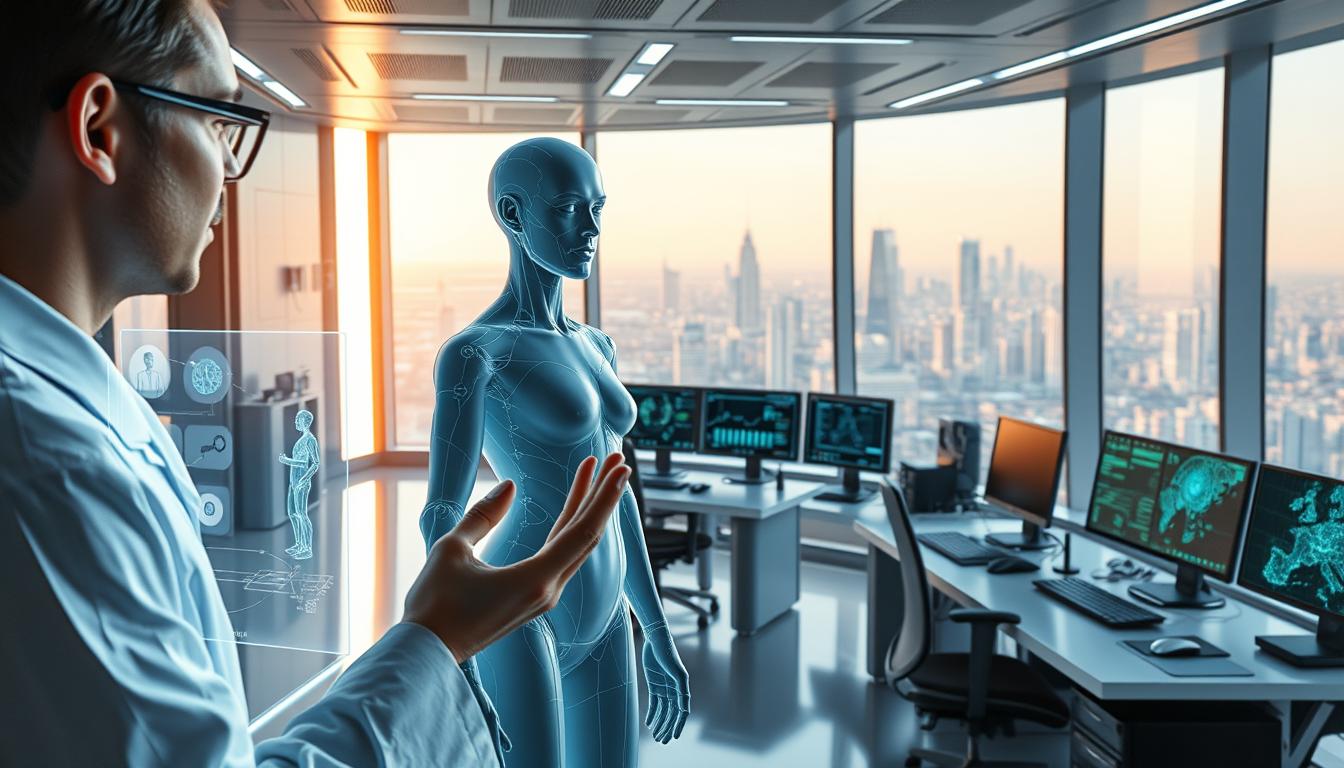
Using AI in making 3D assets makes things more efficient. Tools like Blender and Autodesk 3ds Max work better with AI. This means companies can meet high visual standards without delays.
As more people use 3D platforms, AI will help a lot. It will let one billion new creators make things. This will lead to more innovation and better digital content. For more on AI in 3D, read this article on generative AI techniques.
Best AI to Make 3D Characters
In the world of 3D character design, many AI tools are top choices. They offer features like quick prototyping and clean designs. Knowing what each tool does helps developers and artists pick the right one for their projects.
Overview of Top AI Tools
Many professionals use different AI tools for 3D work. Here are some of the best ones:
| Tool | Pricing | Model Generation Type | Special Features |
|---|---|---|---|
| Masterpiece X | $10.99/month | Text-to-3D | Supports multiple file formats |
| Rokoko Vision | $25/month | Video-to-3D | Real-time motion capture |
| Spline | Free | Text-to-3D | Real-time collaboration |
| Sloyd | Free | Text-to-3D | Ideal for props and architectural assets |
| 3DFY AI | $20/month | Text-to-3D | Monthly generation credits |
| Luma AI | $29.99/month | Video-to-3D | Artistic video generation |
| DeepMotion | $15/month | Video-to-3D | Multi-person tracking |
| Ponzu | Free | Text-to-3D | Basic features |
| NeROIC | Free | Text-to-3D, Image-to-3D | Three-step generation process |
Key Features of Leading Software
Each top 3D character software has special features. For example, Masterpiece X works well with many file types. Spline makes editing together easy. Luma AI and DeepMotion are great for turning videos into 3D models.
Choosing the best AI for 3D modeling depends on what you need. Look at prices, what it can do, and how it works. This way, you get the right tool for your project.
Meshy: Your AI 3D Model Generator
Meshy AI 3D generator is a top tool for 3D character making. It's easy to use and has cool features. It turns text into detailed 3D models fast. This is great for both newbies and pros who want to work faster.
Concept Generation with Text-to-3D Feature
The text-to-3D feature of Meshy makes quick basic models. It's perfect for concept artists and game makers. Just type in some keywords, and you get many character designs fast.
Here are some cool Meshy features that make it great:
- It makes 3D models in STL, FBX, and OBJ formats. This works with many 3D design programs.
- It can make lots of models at once. This saves a lot of time on big projects.
- It's easy to use, even if you don't know 3D modeling. This makes it easy for everyone to be creative.
- It has tools for sharing work in real time. This helps teams work together better.
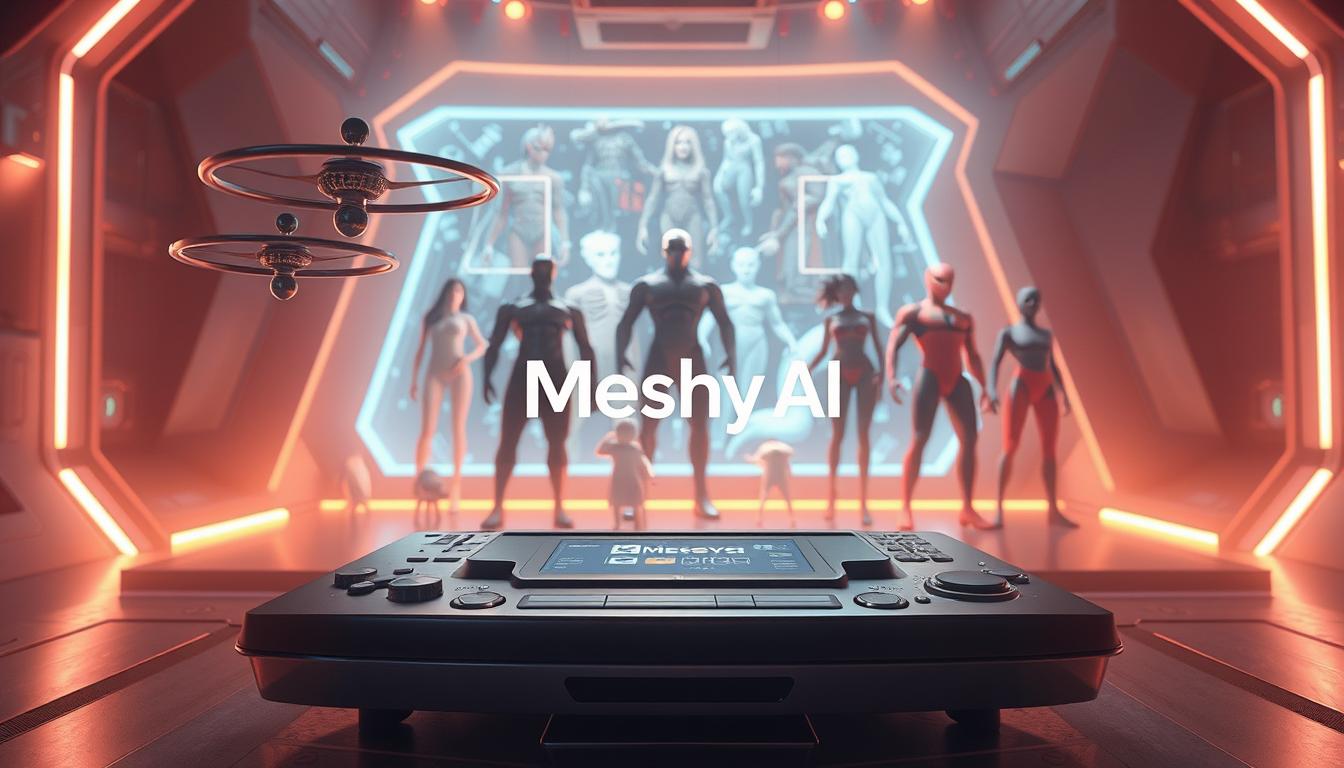
Once you make a model, you can make it better. This makes making characters faster. It's super useful in gaming, animation, and product design.
Enhancing Details with Blender
Blender is key for enhancing 3D character details. It has powerful tools and is easy to use. Artists can make AI models look better by changing color maps to displacement maps.
Starting with displacement strength values from 0.01 to 0.05 helps a lot. This makes characters look more real.
AI tools make 3D models fast, in 10-15 seconds. But, these models have simple shapes. Blender helps artists add more detail to these models.
When making 3D models better, start with subdivision level 2. Increase it slowly to improve looks without slowing down Blender. Also, check UV mapping first to avoid texture problems.
Blender can render many models at once, which is great for games. But, watch the polygon count to avoid slowdowns. Adjusting displacement strength helps find the right balance.
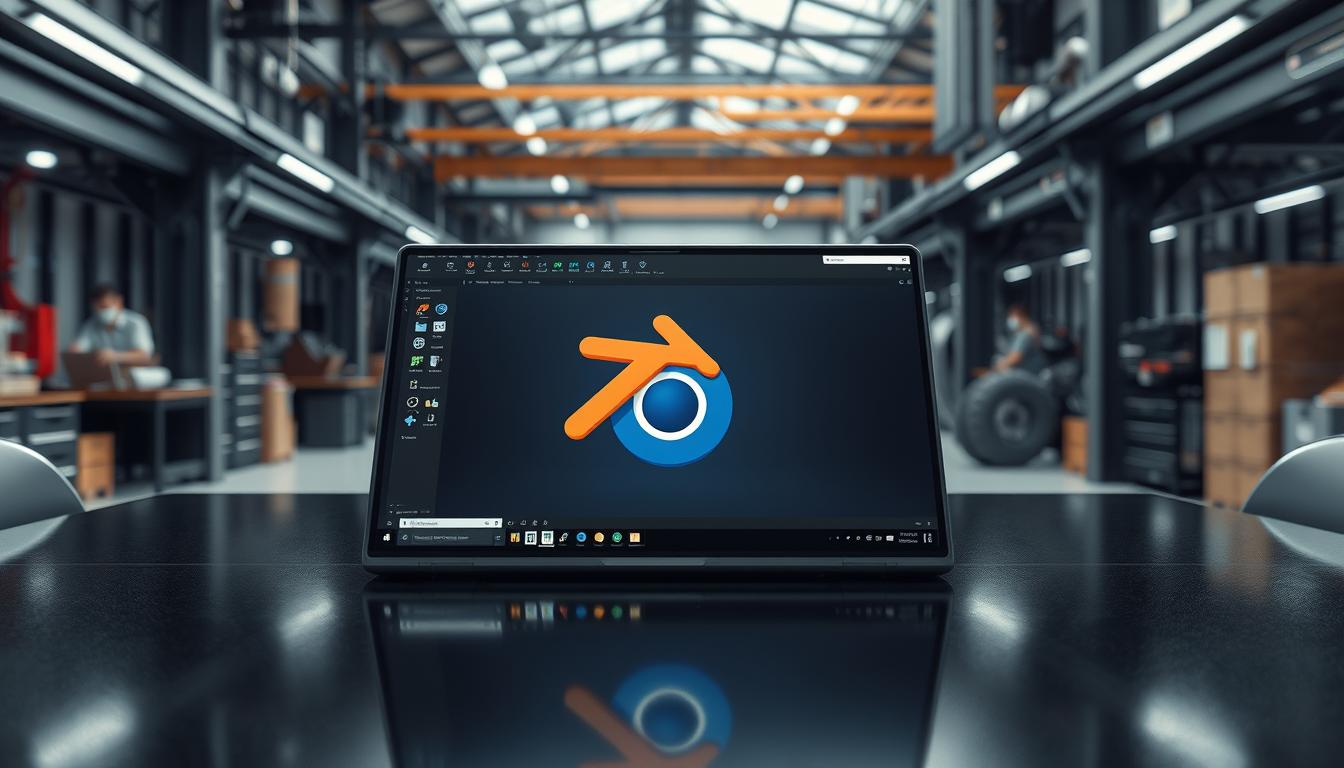
AI tools make Blender better for both pros and hobbyists. Blender is the top choice for artists who want to improve their work.
Sculpting Precision with ZBrush
ZBrush is a top tool for 3D modeling. It's known for making detailed designs that improve character design. Artists love it for its ability to handle high polygon counts, making textures and shapes look amazing.
Artists start by making a base mesh. They use tools like Character Creator to adjust body shapes. Then, in ZBrush, they work on the mesh in levels to get the right details.
Tools like Clay Buildup help add depth to facial features. This makes characters look more real. Normal maps from detailed mesh sculpting also make lower-density meshes look better.
For skin details, artists use the Standard brush with a Spray setting and Alpha 58. They need to do this a few times to get it right. Character Creator's normal map setting can be changed to show more details.
After sculpting, artists need to put the mesh into workflow tools like 3DXchange. It's important to match the number of vertices. Facial hair and other details should be exported at higher levels for better results.
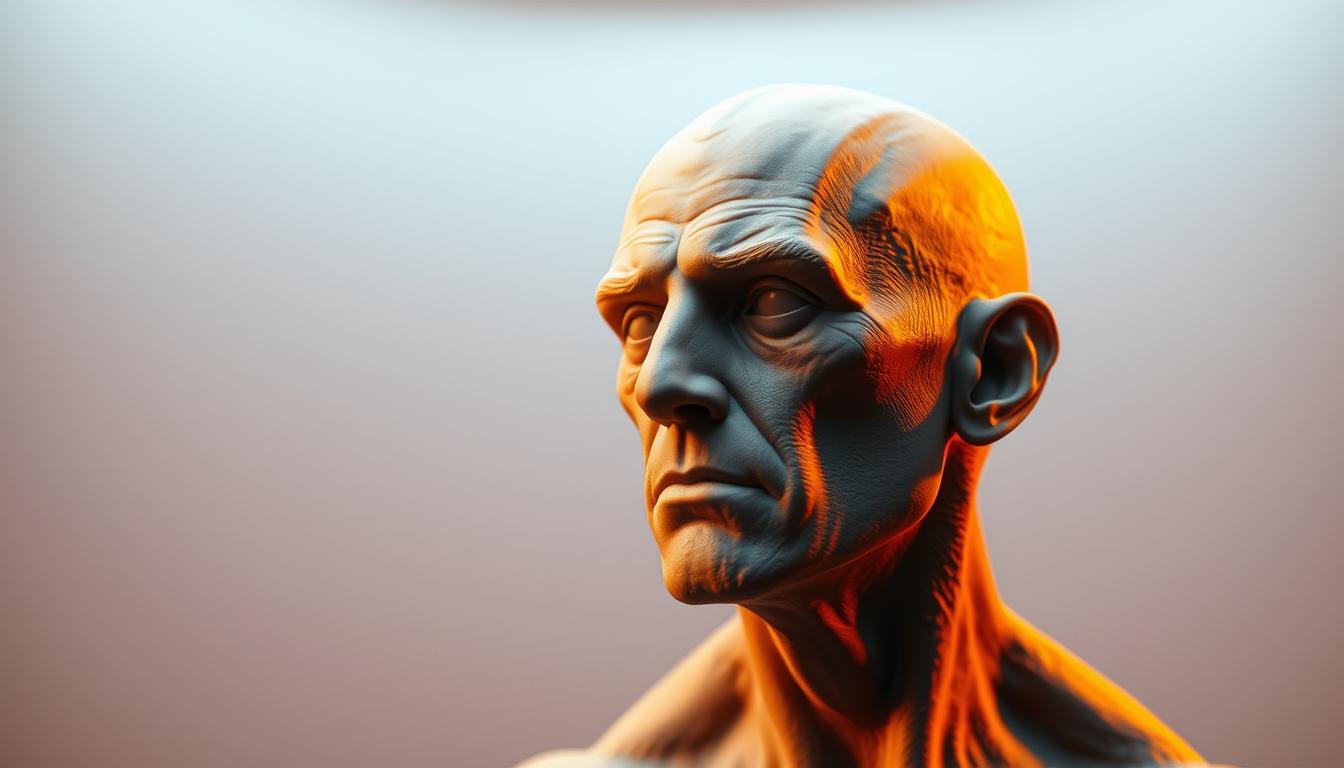
ZBrush makes the character creation process easier. It lets artists focus on creativity, not technical stuff. With ZBrush, making characters is more efficient and artistic, changing 3D modeling.
Realistic Textures with Substance Painter
Substance Painter is key for making 3D designs look real. It lets artists paint on 3D models, adding layers to make characters seem alive. This tool helps artists get the small details right, making things look very lifelike.
Artists use smart materials and dynamic layers to get amazing results fast. AI tools help speed up the work, making it great for games and movies. Mixing old and new ways of texturing makes textures look even better.
For example, AI can make color, normal, and roughness maps all at once. This saves a lot of time, letting artists focus on their art. More people want high-quality textures, shown in 3D asset marketplaces.
Using Substance Painter helps both new and experienced artists make their work look real. Learning this software helps artists meet today's high standards.
Final Steps: Hair Creation and Rendering Techniques
Hair creation in 3D is key to making models look real. Blender has great tools for this, helping artists manage hair in layers. This makes models look more natural and realistic by about 50%.
When creating hair, details matter a lot. Things like hair type, density, and how it's spread out affect the final look a lot.
When moving to rendering, Blender's subsurface scattering makes skin look better. Adjusting RGB curves can make skin look even more real, improving it by up to 70%. Adding details like scars and wrinkles can make characters look even more real, adding up to 60% realism.
Finalizing 3D models involves grooming, texturing, shading, and optimizing. Each step is important for the model's quality. Using good rendering techniques is key, making models work well in real-time. Advanced physics engines make hair move naturally.
By using these methods, artists can make characters that feel real. Hair creation and finalizing are crucial for making characters believable. Using these tools can make projects look amazing and real.
Conclusion
AI in 3D character design has changed the game for artists. AI tools can do complex tasks fast, saving designers time and improving their work. For example, Luma AI makes models eight times quicker than old methods.
This shows how AI boosts productivity and opens new creative doors. As AI in 3D modeling grows, it's clear these tools are a game-changer.
Tools like Meshy, uMake, and 3DFY.AI have changed how we create characters. They offer quick, many versions and make work easier. They have plans for all, from beginners to pros.
More people using these tools means better designs. It's raising the bar in the industry.
Combining old-school art skills with AI is the future of 3D design. Creators using these tools can make more detailed and creative designs. It's opening up new possibilities in digital art.
FAQ
What are AI tools in 3D character design?
AI tools like Meshy, ZBrush, Blender, and Substance Painter make creating 3D characters easier. They automate tasks and boost productivity. This lets artists make detailed characters quickly and easily.
How does generative AI impact character creation?
Generative AI changes how we make characters by automating hard tasks. It makes designs faster and better. This new way combines old methods with AI, blending tech and creativity.
What are the benefits of using AI in 3D modeling?
AI in 3D modeling brings better animations and automated tasks like lip-syncing. It also helps manage assets well. This improves work in gaming, VR, and architecture, making character design more flexible.
Which AI tools are best for creating 3D characters?
Top AI tools for 3D characters include Meshy for quick prototypes, Hunyuan3D for clean shapes, and Rodin for easy modeling. They meet different needs in game making and animation.
How does Meshy assist in 3D character creation?
Meshy is a strong AI model generator using text prompts. Its Text-to-3D feature lets users make models fast with keywords. But, they often need to tweak the models later, making it great for concept artists and developers.
Why is Blender important in refining AI-generated models?
Blender is key for improving AI models. It has tools for adding details, like making color maps into displacement maps. Its wide range of modeling tools makes it vital in creating characters.
What role does ZBrush play in 3D character sculpting?
ZBrush is essential for adding fine details to 3D characters. It lets users fine-tune features, like symmetry and proportions. Its ability to handle lots of polygons makes characters look real and detailed.
How does Substance Painter contribute to texturing in 3D models?
Substance Painter makes 3D characters look real with advanced texturing. It lets users layer materials for detailed textures. This ensures AI models, like those from Meshy, look great.
What are the final steps involved in 3D character creation?
The last steps in making 3D characters include adding realistic hair and using smart rendering. Blender's tools for hair and skin effects are crucial. They help finish high-quality CG characters that grab attention.